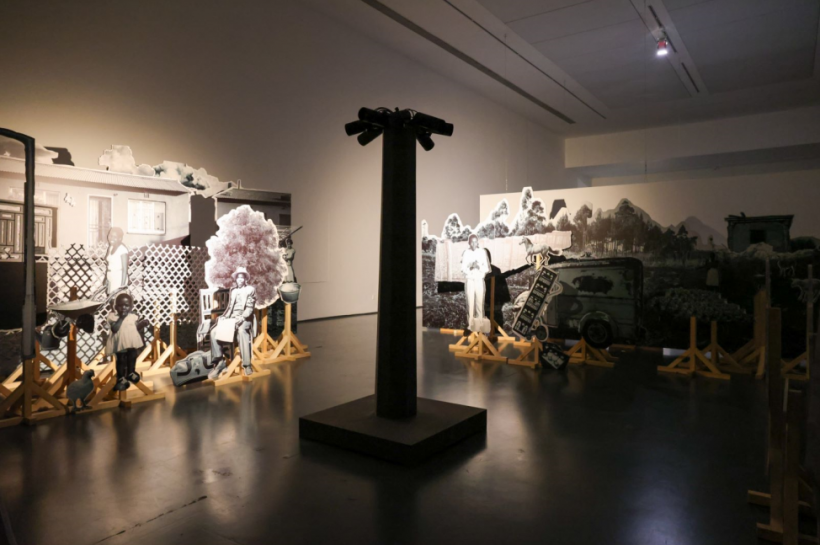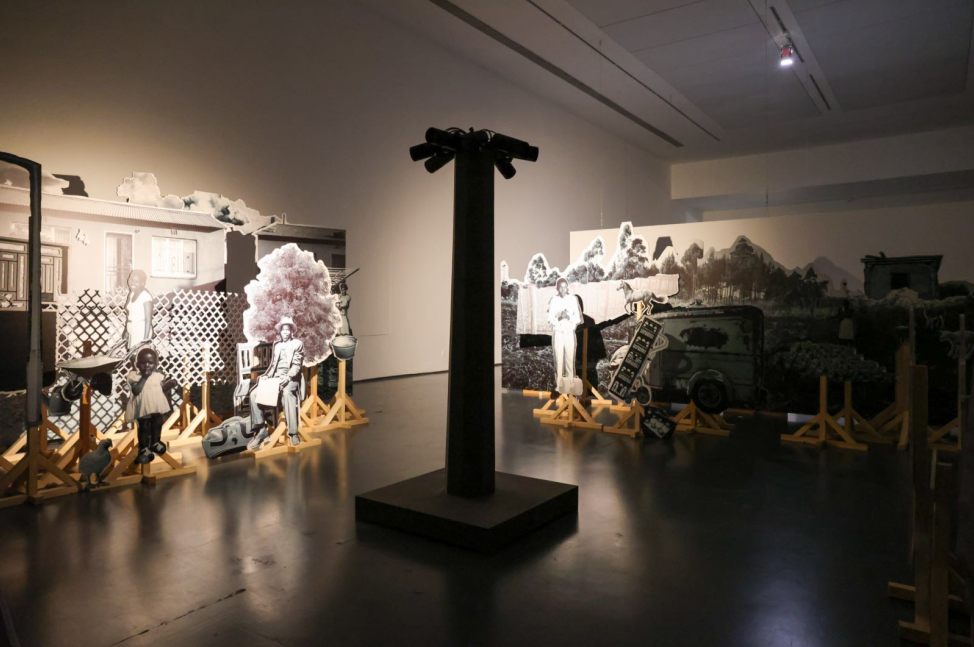Ukuzilanda and The Photographic Image:A Meditation on the Visual Practices of Lebohang Kganye and Alice Mann
Author: Kholeka Shange
In her lecture titled Ukuzilanda, ukubonwa nokungabonwa kweheritage yaMakhosikazi, the scholar and writer Athambile Masola connects the concept of “ukuzilanda” to Blackwomen’s subjectivities. According to her, ukuzilanda comprises of four key processes:
- To fetch oneself (relational)
- Connecting the past and the present: “to fetch oneself and connect oneself to the past in the present moment”
- Ukuzithutha as a form of ukuzilanda (matrilineal vs patrilineal memory)
- Ukuzilanda as a list of names
Masola’s idea of ukuzilanda is particularly important in light of the exclusionary nature of “official” history-making practices which include visuality. It is no secret that when one speaks of photography in South Africa, one is partaking in the predominant evocation of a patrifocal visual ancestry, albeit there are multiple [Black] women image-makers who have critically contributed to the South African photographic landscape. As the feminist theorist Tina Campt notes, photography is not simply a medium through which one creates images but it is “an everyday strategy of affirmation and a confrontational practice of visibility”. In this regard, the act of photo-making is a political practice of representation that is imbued with power. And it is in this context that I reflect on the visual approaches of the South African women artists Lebohang Kganye and Alice Mann who are featured in GuangDong, China’s Portraits in Dialogue exhibition, curated by Lee Ambrozy.
IMAGES IN INTER-LOCUTION?
Although Kganye and Mann’s bodies of works utilise the shared medium of photography to communicate, each artist’s process and context varies. While Mann claims that she uses a combination of documentary photography and portraiture to “create images that subvert simplistic and negative stereotypes of South Africa[n] youth [who are mostly Black]”, Kganye reimagines conventional ways of photo-making by incorporating multidimensionality and motion through installation, as well sonic-orientated stop-frame animated films. And it is important to emphasise that the work that Kganye does as a Blackwoman artist is an embodiment of Masola’s idea of ukuzilanda because she traces her ancestral histories. In addition, since Kganye shapes the visual/sonic/material/immaterial worlds around her, her praxis is reminiscent of the feminist academic and writer Pumla Dineo Gqola’s idea that it is critical for Blackwomen to “participate in the practice of worlding [their] environs, reshaping and actively engaging with the world [they] inhabit”. This is particularly the case in South Africa where Black people’s worlds and ideas have been marginalised and exoticised through a white [masculine] gaze.
And it is in this vein that Mann’s visual work which represents predominantly Black South African youth must be interrogated. While some of Mann’s work portrays images of Black youth in ways that somewhat undermine dominant visual representations that paint them as poverty-stricken delinquents that exist in perpetual futility, it is equally crucial to enquire why there is a continued fascination with Black life as depicted through a white lens? As the civil rights activist Audre Lorde once said, there is power in Black people defining themselves on their own terms. Lorde’s compelling and cautionary words “I learned that if I didn’t define myself for myself, I would be crunched into other people’s fantasies for me and eaten alive” are paramount because they remind us of the political nature of narrative-formation.
In other words, it is not sufficient to confine Black people to the role of being photographic “subjects” wherein they are spoken of and about through an-other’s voice. As the visual activist Zanele Muholi notes in their own praxis which includes photography, the people who are in front of the lens contribute to meaning making as much as the person behind the lens. It is in this context that Muholi refers to the people they photograph as “participants”. And because Muholi documents communities that represent parts of their histor[ies], they too become a participant in front of and behind the lens. Similar to Kganye who is often seen in front of and behind the lens, the dermacated line between the photographer/image maker and “subject” is continuously disrupted.
And even though the exhibition title suggests that there are parallels between Kganye and Mann’s work, it is paramount to meditate on these questions:
Why do we photograph?
Who do we photograph?
Where do we photograph?
Who do we photograph for?
And who are we as we photograph?
In discoursing about the connections between Kganye and Mann’s works, these enquiries should take centre stage as a way to map the histories that each artist draws upon. And with Masola’s notion of fetching one’s self in mind, it becomes critical to seriously think about the positionality of each artist as they re-present worlds (in the present and the past) that are predominantly occupied by people who are systemically on the margins.


